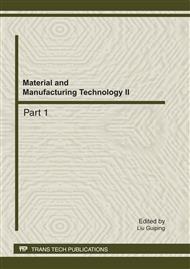p.456
p.462
p.467
p.472
p.478
p.484
p.490
p.494
p.499
Minimizing the Embedding Impact Using Network Flow Algorithms
Abstract:
A novel method of minimizing the embedding impact is proposed in this paper. Optimal embedding is achieved using network flow algorithms by considering the modifications on the cover image as flows of pixels among different states. This method is not an independent steganographic scheme, but rather it minimizes the embedding impact after the embedding process and it’s compatible with the majority of embedding techniques. Due to its dependence on the embedding process, many optimization problems, such as the minimization of a globally interactive distortion function, that are intractable during the embedding process can be solved with relatively low computational cost by rectifying the modifications on the cover image after the embedding process. A distortion function based on Kullback-Leibler divergence is provided as a concrete example to illustrate the basic idea of this method.
Info:
Periodical:
Pages:
478-483
Citation:
Online since:
September 2011
Authors:
Keywords:
Price:
Сopyright:
© 2012 Trans Tech Publications Ltd. All Rights Reserved
Share:
Citation:


